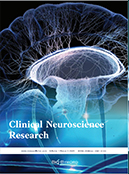Study of the Use of Medical Chitosan in Neurosurgery Eye Care
Abstract
Objective: This study aimed to investigate the effectiveness of medical chitosan in ophthalmic care in neurosurgery. Methods: Through a randomized controlled trial, 90 patients who were undergoing neurosurgery were randomly divided into three groups, with 30 cases in each group. Each group underwent a different type of eye care: Medical chitosan film, erythromycin eye ointment, or homemade eye patch. The occurrence of ocular complications, ocular symptom scores, and quality of life scores of the three groups were observed. Results: The complication rate of the medical chitosan group was significantly lower than that of the erythromycin eye ointment and the homemade eye patch group (P < 0.05). The ocular scores of the medical chitosan film group were significantly better than those of the erythromycin eye ointment and homemade eye protection patch group, and the difference between the medical chitosan film group and the other two groups was statistically significant (P < 0.05) The quality-of-life score of the medical chitosan film group was significantly better than that of the erythromycin eye ointment and the homemade eye patch groups (P < 0.05). Conclusion: Medical chitosan film aids eye care in neurosurgery, so it is worth popularizing and applying.
References
Feng Z, 2020, Analysis of the Impact of Preventive Care on The Prevention of Ocular Complications In General Anesthesia. Electronic Journal of Practical Gynecological Endocrinology, 7(05):160–161.
Lian X, He Y, Tang M, 2019, Effect of Rapid Rehabilitation Nursing on Postoperative Pain and Comfort of Pterygium Surgery Patients Applying Corneal Bandage Lens. Baiqiu’en Medical Journal, 17(06): 615–616.
Shao C, Chen B, Zhu X, 2019, Application of Precise Nursing Intervention in Various Ocular Tumor Trauma Flap Graft Repair and its Effect on Patients’ Postoperative Outcomes. China Drugs and Clinics, 19(21): 3787–3788.
Liu H, Chen J, 2019, Effect of Nursing Intervention on the Prevention of Ocular Complications In General Anesthesia. China Continuing Medical Education, 11(03): 164–166.
Zhang C, 2017, Research on the Application of Medical Chitosan Film for Eye Care in Neurosurgery, dissertation, Hebei Medical University.
Zou Y, Yu H, Chen Y, 2013, Comparative Study of 2 Nursing Intervention Methods for Eye Protection in Neurosurgery. Contemporary Nurses (Lower Decade), 2013(04): 89–90.
Gao P, Yao M, Sui L, et al., 2013, Observation on the Effect of Rite Medical Chitosan Film in Preventing Postoperative Exposure Keratitis In General Anesthesia. Zhejiang Clinical Medicine, 2013(11): 1665–1666.
Sun H, Zhang Y, Liu Z, et al., 2012, Study on the Inhibitory Effect of Medical Chitosan on Proliferative Vitreoretinopathy. Chinese Journal of Practical Ophthalmology, 30(6): 745–749.
Wang S, Zhang Y, Zuo G, et al., 2020, Clinical Efficacy Observation of Negative Pressure Closed Drainage Technique Combined with Medical Chitosan in the Treatment of Osteofascial Compartment Syndrome. Journal of North China University of Science and Technology (Medical Edition), 22(1): 19–23.
Bai Y, Zhou Z, Liu X, et al., 2010, Inhibitory Effect of Medical Chitosan on Neovascularization in Corneal Alkali Burn. Journal of Ocular Trauma and Occupational Ophthalmology, 32(3): 166–169.
Zhangjiagang Lanzhi Biotechnology Co., 2017, An Eye Care Film Containing Medical Chitosan and Preparation Method, China Patent No. CN201710968098.3, China National Intellectual Property Administration
Liu M, Wang Y, 2016, Effectiveness of Different Eye Protection Modalities in Preventing Exposure Keratitis in Cardiac Surgery. Chinese Journal of Modern Nursing, 22(24): 3501–3502 + 3503.
Xiao F, Wang C, Yang S, 2021, Study on the Role of Different Eye Care Methods on the Development of Postoperative Complications in Eye Surgery. World Abstracts of Recent Medical Information, 21(101): 719–720.
Li P, Qi C, Cheng Y, 2012, Effects of Different Eye Care Methods on Ocular Complications in Patients in General Anesthesia. PLA Nursing Journal, 29(18): 41–43.
Ni X, Sang L, Lv L, 2019, Observation on the Role of Comprehensive Nursing Intervention on the Ocular Swelling Reduction of Patients in Neurosurgical Care. Health Research, 39(2): 216–218 + 223.

